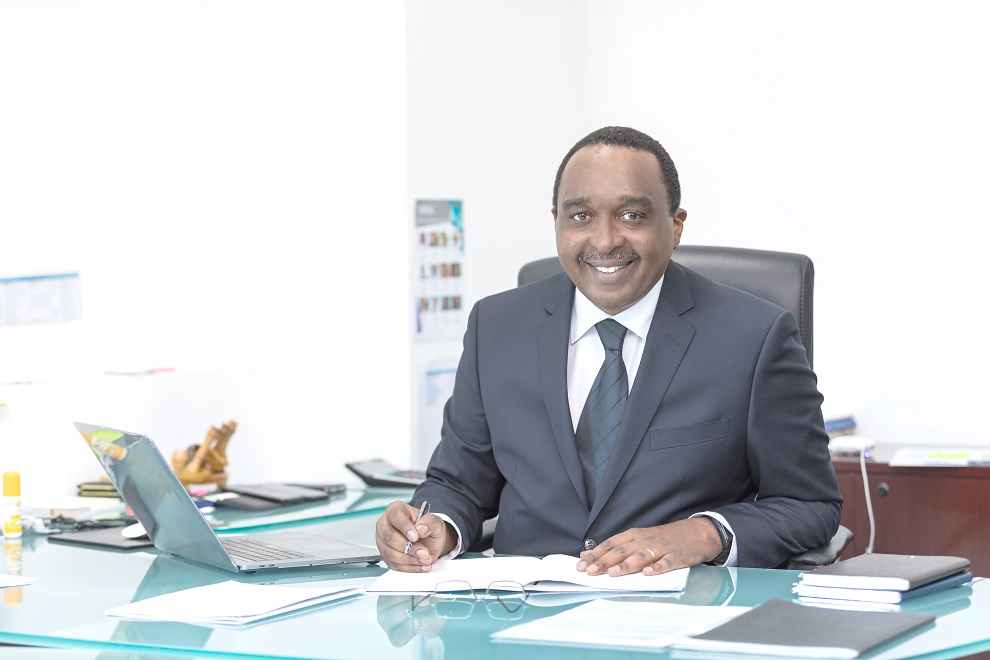Bocar BA – CEO of SAMENA Council
Teletimes International had the opportunity to speak with the CEO of SAMENA Council, Bocar BA. In this interview, BA shares what industry areas the Council has focused on during 2023, and how important it is for the Private Sector and the Governments to strengthen an existing foundation in which digital infrastructure investment, technological evolution, digital asset security, global commitments, and deadlines, as well as purposeful collaborations serve as metaphorical cinder blocks.
Teletimes: What has been SAMENA Council’s core focus during the current year, especially having started the year with a focus on sustainability?
Bocar BA: SAMENA Council’s focus, fundamentally, has remained on the same areas that its primary stakeholders, the region’s Telecom Operators, have defined for it. These areas or priorities include, advocating on broadband connectivity requirements; voicing on the need and suggesting mechanisms for reducing high industry fees and taxes; pursuing contiguous, affordable spectrum allocations and acknowledging regulatory efforts on this front; supporting the collaborative regulation model in its intended form; advocating digital infrastructure funding through diversified contributions; reiterating the need for replacing the age-old “Telecom” approaches with new, “Digital Communication Service” driven thinking; and, of course, placing cross-border data flows and cybersecurity among key foundational objectives for the region’s sustainable digital transformation.
The security of cyberspace is essential for a stable global system. Thus, action must be taken to strengthen this security with approaches that are practical, sustainable, rewarding, and which help enhance digital trust-building. SAMENA Council believes, cybersecurity measures and costs incurred by Operators in compliance to regulatory requirements, should indeed be incentivized. Of course, we also continue to advocate adoption of regulatory sandboxes across multiple areas, including fintech, cross-border data flows, IoT, etc.
As regards “sustainability” in your question, in fact, the focus of our early-year advocacy exercise (“RISE” conference) was not just on “sustainability” as perceived in the context of ESG requirements or as an interplay of environmental, social, and economic variables. Rather, the focus was on sustainable connectivity, and enabling sustainable investments in making both connectivity and connectedness possible for billions of human and non-human users, whose presence is quickly increasing at the endpoint and edge networks.
TT: What are some of the Council’s priorities or plans for the Q4-2023?
BA: There are several activities that SAMENA Council will be conducting or actively participating in. Three such notable activities include: First, the SAMENA Leadership & Excellence Awards (“LEADs”), the inaugural edition of which will be held to publicly recognize efforts of the Industry on the Innovation, Business, Experience, and Regulatory Enablement fronts. SAMENA LEADs also serve as a platform where technology, regulatory, and business milestones in the SA-ME-NA region, particularly in the Mideast, can be translated into best practices and inspire similar success in the neighboring regions.
Secondly, a new edition of SAMENA Accelerator will be held, to take earlier discussions on fiber-based networks and IPv6 transition forward.
Thirdly, SAMENA Council is fully supporting the Huawei Global Ultra Broadband Forum (UBBF) 2023 and the Global Mobile Broadband Forum (MBBF) 2023.
Lastly, we will be present at the GITEX 2023.
All these activities will be conducted in Dubai during the “SAMENA TEK Week”, starting October 10th.
TT: What significance do MBBF and UBBF forums have this year, which have prompted SAMENA Council’s support?
BA: In fact, this is not the first time that the Council is supporting MBBF and conducting a special segment during the UBBF. We have done so in 2021 as well. The Council believes that these forums successfully and effectively represent and showcase evolution of mobile and fixed network technologies and applications, thereby making intelligent connectivity and associated opportunities possible for Operators and end-users alike.
Huawei, apart from being an important Member of the Council, is a key enabler of digital transformation in the SA-ME-NA region. Both UBBF and MBBF platforms help to take the vision of industry-wide collaboration forward, while fast-pacing evolution of digital communications technologies. At the end, this serves everyone.
The 2023 editions of MBBF UBBF will reflect strongly on drawing value out of 5G’s true potential and pioneering transformation toward 5G-Advance, while also translating policies to action, especially in relation to activating gigabit connectivity in the region. The latter will specifically come under discussion during the SAMENA Council hosted SAMENA Accelerator, to be held during the UBBF 2023 under the theme “10 Gigabit Digital Infrastructure for Accelerating a Robust & Sustainable Digital Economy.”
SAMENA Council, itself a platform for all stakeholders across private and public-sector domains, regions, and for both ICT and adjacent sectors, and given its mission of supporting industry-wide efforts in “building digital economies”, opening invites the Industry to participate in both UBBF 2023 and MBBF 2023.
TT: What is the direct link between Sustainable Development Agenda and Digital Transformation, and what may be a great challenge associated with the latter?
BA: To answer this, we need to first fully understand that digital transformation and digitally-powered socio-economic development are two pillars on which multiple plans for the future rest – for example, economic sector diversification, increasing productivity, or fulfilling specific ambitions and national plans.
Digital transformation, however, requires predictable and sustainable investments and partnerships, fit-for-purpose collaborative policies and just-the-right regulation, and targeted demand-side approaches. Technologies such as AI, IoT, IIOT, cloud computing, distributed ledger technology, precision medicine, digital trade, autonomous mobility, etc. all can impact the pace and depth of digital transformation, and thus will bring new challenges but also opportunities.
With digital transformation, many sustainable development objectives (“SDGs”) can be met, directly: for example, human capacity-building and advancement through education and better healthcare; responsible production and efficient consumption; controlling and reducing carbonization; food and livelihood from agricultural; quality and sustainability-conscious urban living; democratization and improved participation in and benefit from digitally inclusive government services.
With digital transformation, however, arrives the need to revisit and revive enabling regulatory frameworks, which need to be adjusted to stimulate investment while maintaining a healthy level of innovation, competition, and market resilience. There is no true digital transformation if any of these factors are not in play.
TT: What are your brief thoughts about Telecom Operators’ evolving role, and what do you feel would become a key focus area in 2024 for network development?
BA: I believe, a longstanding desire of Telecom Operators to evolve from being telecom companies to being technology companies (“Tech Cos”) is coming to life in this age of 5G and Web3. As a wide array of digital experiences are now being made possible, the foundation for the next “G” is being created.
What Telecom Operators now require more than ever before, is to adopt a technology company mindset and build resilient, robust, and versatile networks, which should be able to support the coexistence of massive IoT and multiple other modern technologies, including autonomous vehicles.
In 2024, I feel, we would increasingly focus more on connecting the remaining one-third of the world’s population. For this, unlocking access to new capital and addressing affordability aspects of broadband, encompassing both quality network to end-user devices, would prove to be essential. Furthermore, I strongly believe that both governments and the Private sector would come to terms with the realization that future infrastructure development requires financing and funding from everyone, and not just from Operators. The Operators-only funding model is simply unsustainable, and it is one of the main reasons why, despite trillions of dollars that Operators have invested directly on infrastructure development, a significant share of the world’s population remains offline.
Lastly, I feel, as Regulators, we would have to work more proactively to bring agility and real-time adaptive qualities in regulatory processes. Through regulatory agility, a myriad of challenge areas, including better collaborations and reduced friction among Regulators and Telecom Operators, can be achieved. More so, by combining regulatory agility with regulatory parity, we can further gain the confidence that challenges such as IoT standardization or underlying conflicting positions among market players — for instance, on 6GHz spectrum for IMT and 5G (a key subject to come under discussion at the WRC-23 conference in November), or on achieving parity between high-altitude platform stations as IMT base stations (HIBS) and terrestrial networks — could be overcome. Notably, regulatory agility and regulatory parity are more likely to be achieved and thus should be pursued by governments having already attained the G5 regulator classification from the ITU.
TT: What are your final thoughts?
BA: On the road to business and technological evolution, and as universal connectivity and new digitally-powered economic activities become more widespread in the region, Operators, Tech Providers, Policymakers, and Regulators should strive to be well-aligned. SAMENA Council’s advocacy work revolves precisely around this underlying objective. In this regard, we look forward to continue supporting the Industry and especially our Members.












